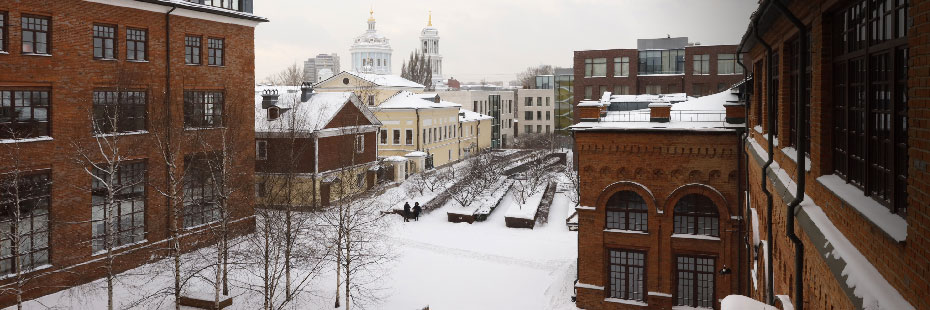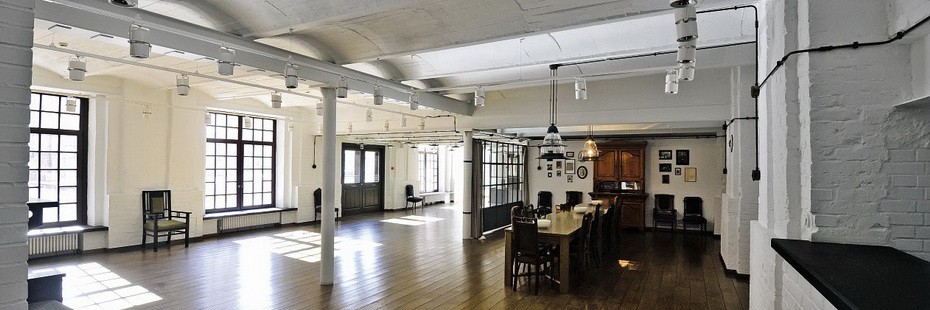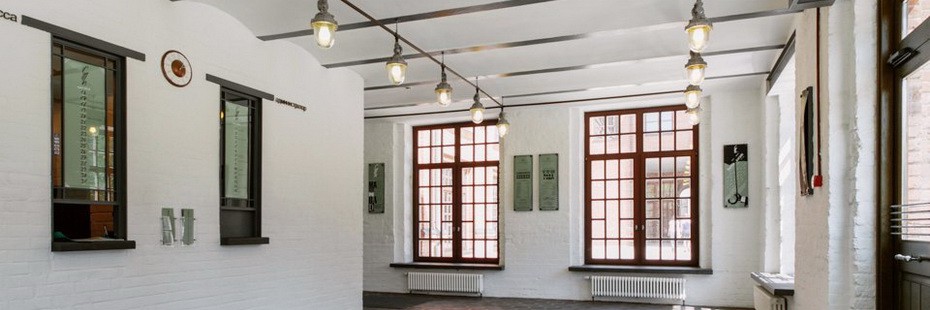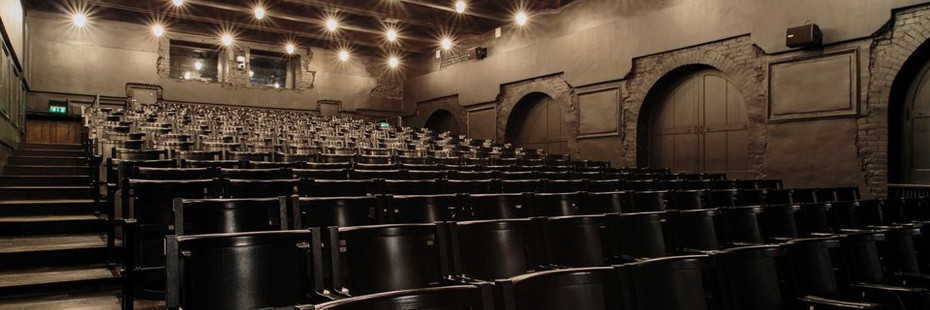Everything is exactly what you would expect from Sergei Zhenovach. Low-key, heartfelt, sensitively thought-out and beautifully executed. This, and much more, can be said about Zhenovach’s latest production, a dramatization of Charles Dickens’ “The Battle of Life.” But what I really have in mind is the new space Zhenovach has just unveiled for his young theater, the Studio of Theatrical Art. It is fitting that Zhenovach would open his spectacular new playhouse this season, the event coming just a few months after the director’s former teacher and mentor Pyotr Fomenko opened his own new space on the other side of town. These two new venues have changed the face of Moscow theater. Very different in conception — Fomenko’s theater is a stunning piece of contemporary architecture, while Zhenovach has moved into a meticulously reconstructed old factory — both buildings set extremely high standards for the future of theater design in Moscow.
Aside from the beauty of Zhenovach’s lovingly reconfigured old factory, however, there is a sense of destiny and purpose built into every restored brick and beam of this 19th-century structure. It once housed the factory owned by the family of Konstantin Stanislavsky, the founder of the Moscow Art Theater. Stanislavsky worked here in the 1880s and created his first theater here, an amateur group called the Society of Art and Literature. Leading a small group of guests on an impromptu excursion through the theater before the second performance of “The Battle of Life” last weekend, Zhenovach grinned and said, “Stanislavsky created his theater here to keep the workers from drinking in their spare time.” Of course, Stanislavsky had bigger plans than that, and it is staggering to think that this historic location has remained neglected by the theater community for decades.
Designer Alexander Borovsky oversaw the reclamation project and was careful to do what so many architects do not in these wild days of reconstruction in Moscow — he maintained the integrity and spirit of the structure, keeping original materials in place wherever possible, and stripping back layers of brick in places to reveal snippets of the actual walls that existed in Stanislavsky’s time. Fixtures and decorative details are historically accurate. Iron gratings on stairwells and brass lighting fixtures combine gracefully with real oak floors and simple brick walls. At the same time, Borovsky created a supremely clean and modern space in which glass provides access to light both through exterior walls and in some interior spaces. Several courtyards surrounding the theater are designed as wide open spaces centered by brightly lacquered pine platforms out of which small birch trees grow. In short, this newly reconstructed theater has the ascetic and work-oriented feel of a factory, but it is also imbued with a strong sense of aesthetics and style.
In many ways one could say that Zhenovach, with his manner of theater, has taken a moral stand against the prevailing fashion of runaway kitsch, excess and crudity. This is evident in the space he now occupies and in his production of “The Battle of Life,” a tale about an extended family that weathers the tests life brings in order to go on living in love and harmony.
The show seems to take forever to begin. One by one, performers straggle out on stage and take up seemingly random positions as if they are waiting for something more important to happen. They chat among themselves and greet each new arrival with friendly hugs and kisses. Behind them in the set designed by Borovsky is a real fire in a real fireplace and a real clock keeping real time on the mantle. Nothing is forced; nothing is done for show; no one is involved in making grand impressions.
The key here is “real” — for Zhenovach has always sought to make theater that has a real impact through real emotions, genuine affection and honest attitudes among people. Theater, of course, is artificial and Zhenovach makes no attempt to hide that. Each of his actors holds a script in hand and, for the course of the entire show, they look into those scripts as they appear to read their lines. The show is static and purposefully avoids naturalistic contact between the actors.
Marion (Maria Kurdeneivch), betrothed to Alfred (Maxim Lyutikov) but pursued by Michael Warden (Alexander Lutoshkin), never does more than sit demurely by her fiance or hold back the door as her would-be lover tries to break into her life. According to the words of the Author (Sergei Pirnyak), Marion’s sister Grace (Yekaterina Polovtseva) may embrace her father Doctor Jeddler (Sergei Kachanov), but in actual fact the actors simply gaze warmly at each other from their places on stage. The love that blossoms between the family servants Benjamin Britain (Alexander Oblasov) and Clemency Newcome (Maria Shashlova) is visually revealed only when Clemency appears looking eight months pregnant. The attorneys Snitchey (Grigory Sluzhitel) and Craggs (Sergei Abroskin) are like twins joined at the hip — wherever Snitchey goes, Craggs follows. At least that is true until Snitchey unexpectedly refers to his friend and partner as “deceased.” Abroskin, appearing crestfallen, slowly stands and leaves the stage.
In effect, Zhenovach created “The Battle of Life” as a kind of rehearsal, a staged reading of a novel that, at some point, might develop into a theatrical performance. It is a daring ploy because it means we are constantly waiting for some big transformation. When will this reading become theater? When will the warm, relaxed, friendly, ironic relations between the actors transform into the more intense relationships that bind Dickens’ characters together? On one level it never happens. The actors always remain contemporary women and men trying on the personalities of people they can only know approximately in their imagination. Repeatedly they reveal the chasm that separates them from the characters they play — perhaps by laughing off some strange quirk, perhaps by directing a sarcastic glance at another actor on stage when reading a line that might seem particularly silly or improbable. But the magic of performance in general — and of Zhenovach’s brand of theater in particular — is that through the act of ironic denial, a confirmation takes place. Dickens’ sentimental and romantic tale about familial love, respect, trust and duty springs to life in a modern context.
It is clear why Zhenovach selected a work like this with which to open his new space. In the tale about a father watching his beloved daughters grow into strong and worthy adults despite difficulties and temptations, one espies Zhenovach’s own desire to set an example for his young troupe. In the end, this production is as much about them — Zhenovach’s actors — as about any characters created by Dickens. “The Battle of Life” is a platform, a testing ground, on which the troupe of the Studio of Theatrical Art puts its beliefs and aspirations on the line. There are no loud declamations here, no sloganeering and no flag-waving. But there is a stage full of natural, charming, sincere actors who, under their director’s guidance, frame those simple human qualities in a work of theatrical art. What a way to resurrect the space that gave Konstantin Stanislavsky his start!
вся пресса





